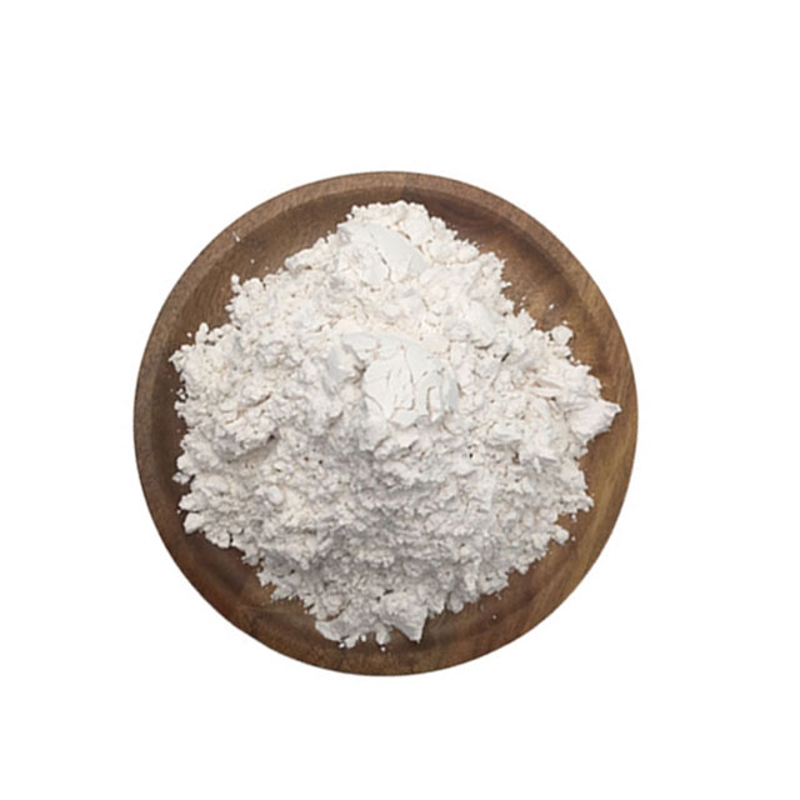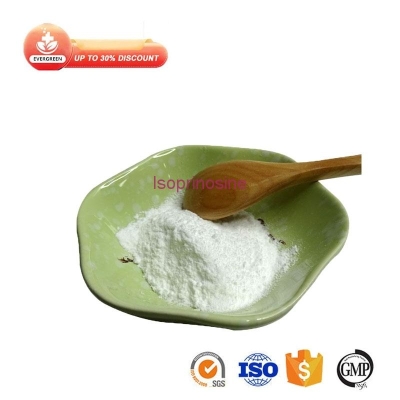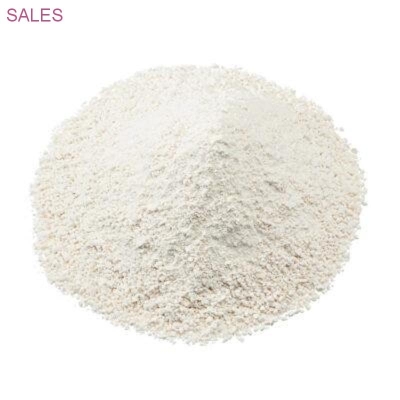-
Categories
-
Pharmaceutical Intermediates
-
Active Pharmaceutical Ingredients
-
Food Additives
- Industrial Coatings
- Agrochemicals
- Dyes and Pigments
- Surfactant
- Flavors and Fragrances
- Chemical Reagents
- Catalyst and Auxiliary
- Natural Products
- Inorganic Chemistry
-
Organic Chemistry
-
Biochemical Engineering
- Analytical Chemistry
- Cosmetic Ingredient
-
Pharmaceutical Intermediates
Promotion
ECHEMI Mall
Wholesale
Weekly Price
Exhibition
News
-
Trade Service
*It is only for medical professionals' reference.
Involvement of the digestive tract is one of the risk factors for the extremely poor prognosis of vasculitis.
On May 20-22, 2021, the 25th academic conference of the Rheumatology Society of the Chinese Medical Association was held in Shenzhen.
This conference was full of big names and bright spots.
Professor Tian Xinping from the Department of Rheumatology and Immunology of Peking Union Medical College Hospital gave a wonderful introduction on "Vasculitis-related Gastrointestinal Critical Illness" at the conference.
After the conference, the "medical community" was fortunate to invite Professor Tian Xinping as a guest of the "famous doctor Kungfu tea" 2021CRA special.
At the scene, call for doctors in rheumatology and immunology departments across the country.
The picture shows Professor Tian Xinping as a guest in the live room with vasculitis-related gastrointestinal (GI) critical illness: the risk is extremely high, and the diagnosis rate is only about 30%! The GI symptoms of patients with vasculitis are more common, but the incidence of GI involvement (producing lesions) caused by vasculitis is very low, or even rare.
However, once vasculitis affects the GI, the risk is extremely high.
Before the 1970s, if vasculitis involved GI, the patient's mortality rate was nearly 100%.
After the 1990s, with the deepening of the understanding of the disease and the improvement of the level of treatment, the 10-year survival rate of patients has increased to 56%.
However, the involvement of vasculitis in the GI still strongly suggests a poor prognosis of vasculitis.
If combined with peritonitis, perforation, ischemic infarction or intestinal occlusion, the mortality rate is significantly increased.
According to statistics, up to 22%-54% of patients with GI involvement are severely ill and require surgical treatment.
Professor Tian Xinping pointed out that early and timely diagnosis is the key to improving prognosis and reducing mortality.
However, according to the records of autopsy reports, the vast majority (69%) of patients have not been diagnosed in time, and GI involvement has never been suspected clinically.
This is not unrelated to the concealment of GI involvement of vasculitis, and the non-specific clinical manifestations.
List of four major vasculitis involving GI 1gA vasculitis (HSP): 50%-80% polyarteritis nodosa (PAN): 31%-54% neutrophil antibody (ANCA) associated vasculitis (AAV) : 5%-40% Eosinophilic granulomatous polyangiitis (EGPA): 23%-40% Microscopic polyangiitis (MPA): 5%-30% Granulomatous polyangiitis (GPA): 5 %-10% Behcet’s disease (BD): 10%-20% of the clinical symptoms are mainly abdominal pain, and these symptoms can also be manifested as these symptoms.
Abdominal pain is the most common clinical manifestation of vasculitis-related GI, which can be seen in almost all (86%-97%) )patient.
Therefore, some scholars have even pointed out that if patients with vasculitis have no abdominal pain, GI involvement may not be considered.
In addition, GI involvement can also manifest as gastrointestinal bleeding (24%), intestinal obstruction (17%), intestinal perforation (10%), and some non-specific symptoms, such as nausea/vomiting (17%), diarrhea (14%) , Fever (7%), weight loss (7%), jaundice (3%), etc.
Gastroscopy cannot make a clear diagnosis, and auxiliary examinations rely on these! 1 Under endoscopic endoscopy, the common manifestations of GI involvement of vasculitis are non-specific, mainly erosions, bleeding spots, edema, submucosal hemorrhage, nodular changes, and ulcers, which are easily diagnosed as gastritis, esophagitis, and twelve ulcers.
Donitis.
The most typical change under the endoscopy is multiple, small round ulcers with hyperemia.
However, recent studies have found that some patients with severely affected G1 have no abnormal endoscopic findings.
Therefore, the role of endoscopy in the diagnosis of GI involvement in vasculitis is controversial.
GI lesions caused by 2CT vasculitis usually involve the small intestine and large intestine, and the most typical manifestations are edema and thickening of the intestinal wall, and sometimes accompanied by dilatation of the ureter.
Figure 1 Intestinal wall edema, thickening, and bullseye sign 3 Multi-slice spiral CT (MDCT) MDCT can help us distinguish whether the lesion is located in the arterial system or the venous system, and whether there is active bleeding.
The corresponding imaging performance is shown in Figures 2, 3, and 4 below.
Figure 2 Active bleeding in the small intestine Figure 3 MDCT shows intestinal lesions caused by acute arterial obstruction Figure 4 MDCT shows how intestinal lesions caused by acute venous obstruction are diagnosed, and which diseases must be differentiated? Based on his decades of medical experience, Professor Tian Xinping shared that if a patient has a history of vasculitis and has GI symptoms, especially abdominal pain, it can be judged whether the disease is involved in GI based on the results of imaging examinations.
If the patient has no history of vasculitis, imaging tests should be used to assist in the diagnosis, but the final diagnosis also depends on histological evidence.
The differential diagnosis also plays a very important role in the involvement of vasculitis in GI.
Because the treatment drugs for patients with vasculitis include hormones, we first need to identify whether the patient's GI symptoms are drug-induced.
Secondly, it is necessary to rule out similar lesions caused by viral or bacterial infections.
According to a large amount of literature, Professor Tian Xinping concluded that if the patient satisfies any of the following conditions, it is most likely that vasculitis is involved in GI: mesangial ischemia changes in young people; other GI sites that are less affected by inflammation have lesions, such as the stomach , Duodenum, rectum; the lesions are diffuse, involving the small and large intestines at the same time; multiple systems are involved, such as genitourinary system involvement at the same time.
Treatment options for vasculitis involving GI ■ Glucocorticoid + immunosuppressant glucocorticoid + cyclophosphamide (CTX) is the standard treatment plan.
If Gl lesions are severe, methylprednisolone pulse therapy + CTX should be used.
However, because glucocorticoids control inflammation, they can also cause the intestinal wall to thin, and in some patients, it can even induce perforation.
Since immunosuppressive agents may reverse the intestinal wall thinning caused by glucocorticoids, timely use of immunosuppressive agents should be emphasized to reduce the incidence of perforation.
In addition, two points should be paid attention to when using hormones.
One is to give enough hormones in dosage, and the other is to reduce to a lower dose of hormones as soon as possible to shorten the use time of hormones.
■ Biological agents: Rituximab, TNFi.
For example, in AAV, rituximab can be used; in BD, tumor necrosis factor-α (TNF-α) inhibitors can be used. ■ Anticoagulation and antiplatelet therapy If the patient has thrombosis, whether it is arterial thrombosis or vein, anticoagulation or antiplatelet therapy should be considered at the same time.
■ In the case of severe ischemia, perforation, or peritonitis during surgical treatment, an emergency laparotomy should be performed to remove the affected part.
■ Treatment of complications If the patient has complications such as fistula or pancreatic involvement, corresponding treatment should also be carried out.
Summary: Although the incidence of vasculitis-related GI critical illness is low, once it occurs, it is extremely dangerous and can threaten the lives of patients.
Early and timely diagnosis is the key to improving prognosis and reducing mortality.
The autopsy report indicated that up to 69% of vasculitis-related GI critically ill patients have not been clearly diagnosed.
It can be seen that this problem has brought a huge burden and challenge to the clinic.
The main manifestation of GI critical illness related to vasculitis is abdominal pain, and histological biopsy evidence is the gold standard for diagnosis.
However, if the patient has a clear history of vasculitis and GI symptoms, combined with the results of imaging examinations, it can also be determined whether the disease is involved in GI.
The standard treatment plan for vasculitis involving GI is glucocorticoid + immunosuppressive agent.
Biological agents or anticoagulant and antiplatelet therapy can also be used according to the situation.
If there are indications, an emergency laparotomy should be performed.
Involvement of the digestive tract is one of the risk factors for the extremely poor prognosis of vasculitis.
On May 20-22, 2021, the 25th academic conference of the Rheumatology Society of the Chinese Medical Association was held in Shenzhen.
This conference was full of big names and bright spots.
Professor Tian Xinping from the Department of Rheumatology and Immunology of Peking Union Medical College Hospital gave a wonderful introduction on "Vasculitis-related Gastrointestinal Critical Illness" at the conference.
After the conference, the "medical community" was fortunate to invite Professor Tian Xinping as a guest of the "famous doctor Kungfu tea" 2021CRA special.
At the scene, call for doctors in rheumatology and immunology departments across the country.
The picture shows Professor Tian Xinping as a guest in the live room with vasculitis-related gastrointestinal (GI) critical illness: the risk is extremely high, and the diagnosis rate is only about 30%! The GI symptoms of patients with vasculitis are more common, but the incidence of GI involvement (producing lesions) caused by vasculitis is very low, or even rare.
However, once vasculitis affects the GI, the risk is extremely high.
Before the 1970s, if vasculitis involved GI, the patient's mortality rate was nearly 100%.
After the 1990s, with the deepening of the understanding of the disease and the improvement of the level of treatment, the 10-year survival rate of patients has increased to 56%.
However, the involvement of vasculitis in the GI still strongly suggests a poor prognosis of vasculitis.
If combined with peritonitis, perforation, ischemic infarction or intestinal occlusion, the mortality rate is significantly increased.
According to statistics, up to 22%-54% of patients with GI involvement are severely ill and require surgical treatment.
Professor Tian Xinping pointed out that early and timely diagnosis is the key to improving prognosis and reducing mortality.
However, according to the records of autopsy reports, the vast majority (69%) of patients have not been diagnosed in time, and GI involvement has never been suspected clinically.
This is not unrelated to the concealment of GI involvement of vasculitis, and the non-specific clinical manifestations.
List of four major vasculitis involving GI 1gA vasculitis (HSP): 50%-80% polyarteritis nodosa (PAN): 31%-54% neutrophil antibody (ANCA) associated vasculitis (AAV) : 5%-40% Eosinophilic granulomatous polyangiitis (EGPA): 23%-40% Microscopic polyangiitis (MPA): 5%-30% Granulomatous polyangiitis (GPA): 5 %-10% Behcet’s disease (BD): 10%-20% of the clinical symptoms are mainly abdominal pain, and these symptoms can also be manifested as these symptoms.
Abdominal pain is the most common clinical manifestation of vasculitis-related GI, which can be seen in almost all (86%-97%) )patient.
Therefore, some scholars have even pointed out that if patients with vasculitis have no abdominal pain, GI involvement may not be considered.
In addition, GI involvement can also manifest as gastrointestinal bleeding (24%), intestinal obstruction (17%), intestinal perforation (10%), and some non-specific symptoms, such as nausea/vomiting (17%), diarrhea (14%) , Fever (7%), weight loss (7%), jaundice (3%), etc.
Gastroscopy cannot make a clear diagnosis, and auxiliary examinations rely on these! 1 Under endoscopic endoscopy, the common manifestations of GI involvement of vasculitis are non-specific, mainly erosions, bleeding spots, edema, submucosal hemorrhage, nodular changes, and ulcers, which are easily diagnosed as gastritis, esophagitis, and twelve ulcers.
Donitis.
The most typical change under the endoscopy is multiple, small round ulcers with hyperemia.
However, recent studies have found that some patients with severely affected G1 have no abnormal endoscopic findings.
Therefore, the role of endoscopy in the diagnosis of GI involvement in vasculitis is controversial.
GI lesions caused by 2CT vasculitis usually involve the small intestine and large intestine, and the most typical manifestations are edema and thickening of the intestinal wall, and sometimes accompanied by dilatation of the ureter.
Figure 1 Intestinal wall edema, thickening, and bullseye sign 3 Multi-slice spiral CT (MDCT) MDCT can help us distinguish whether the lesion is located in the arterial system or the venous system, and whether there is active bleeding.
The corresponding imaging performance is shown in Figures 2, 3, and 4 below.
Figure 2 Active bleeding in the small intestine Figure 3 MDCT shows intestinal lesions caused by acute arterial obstruction Figure 4 MDCT shows how intestinal lesions caused by acute venous obstruction are diagnosed, and which diseases must be differentiated? Based on his decades of medical experience, Professor Tian Xinping shared that if a patient has a history of vasculitis and has GI symptoms, especially abdominal pain, it can be judged whether the disease is involved in GI based on the results of imaging examinations.
If the patient has no history of vasculitis, imaging tests should be used to assist in the diagnosis, but the final diagnosis also depends on histological evidence.
The differential diagnosis also plays a very important role in the involvement of vasculitis in GI.
Because the treatment drugs for patients with vasculitis include hormones, we first need to identify whether the patient's GI symptoms are drug-induced.
Secondly, it is necessary to rule out similar lesions caused by viral or bacterial infections.
According to a large amount of literature, Professor Tian Xinping concluded that if the patient satisfies any of the following conditions, it is most likely that vasculitis is involved in GI: mesangial ischemia changes in young people; other GI sites that are less affected by inflammation have lesions, such as the stomach , Duodenum, rectum; the lesions are diffuse, involving the small and large intestines at the same time; multiple systems are involved, such as genitourinary system involvement at the same time.
Treatment options for vasculitis involving GI ■ Glucocorticoid + immunosuppressant glucocorticoid + cyclophosphamide (CTX) is the standard treatment plan.
If Gl lesions are severe, methylprednisolone pulse therapy + CTX should be used.
However, because glucocorticoids control inflammation, they can also cause the intestinal wall to thin, and in some patients, it can even induce perforation.
Since immunosuppressive agents may reverse the intestinal wall thinning caused by glucocorticoids, timely use of immunosuppressive agents should be emphasized to reduce the incidence of perforation.
In addition, two points should be paid attention to when using hormones.
One is to give enough hormones in dosage, and the other is to reduce to a lower dose of hormones as soon as possible to shorten the use time of hormones.
■ Biological agents: Rituximab, TNFi.
For example, in AAV, rituximab can be used; in BD, tumor necrosis factor-α (TNF-α) inhibitors can be used. ■ Anticoagulation and antiplatelet therapy If the patient has thrombosis, whether it is arterial thrombosis or vein, anticoagulation or antiplatelet therapy should be considered at the same time.
■ In the case of severe ischemia, perforation, or peritonitis during surgical treatment, an emergency laparotomy should be performed to remove the affected part.
■ Treatment of complications If the patient has complications such as fistula or pancreatic involvement, corresponding treatment should also be carried out.
Summary: Although the incidence of vasculitis-related GI critical illness is low, once it occurs, it is extremely dangerous and can threaten the lives of patients.
Early and timely diagnosis is the key to improving prognosis and reducing mortality.
The autopsy report indicated that up to 69% of vasculitis-related GI critically ill patients have not been clearly diagnosed.
It can be seen that this problem has brought a huge burden and challenge to the clinic.
The main manifestation of GI critical illness related to vasculitis is abdominal pain, and histological biopsy evidence is the gold standard for diagnosis.
However, if the patient has a clear history of vasculitis and GI symptoms, combined with the results of imaging examinations, it can also be determined whether the disease is involved in GI.
The standard treatment plan for vasculitis involving GI is glucocorticoid + immunosuppressive agent.
Biological agents or anticoagulant and antiplatelet therapy can also be used according to the situation.
If there are indications, an emergency laparotomy should be performed.







